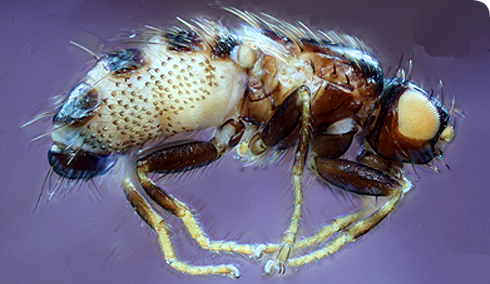Carnus hemapterus
The bird fly Carnus hemapterus is a parasite of nestling birds. After locating the host, adult flies loose their wings and start sucking the blood of the nestlings. The females lay their eggs in the nest, where the larvae then develop feeding on organic nest material.
Carnus hemapterus is widespread in northern North America and Europe, also Israel, Japan.
Carnus hemapterus has been recorded from over 40 bird species such as the Common Barn owl and the pigeon. The numbers of these flies increase with the breeding season of the birds. For example in Spain adult Carnus hemapterus flies emerged from the fourth week of May until the first week of July with a peak in the second week of June.
Species detail
-

Taxonomy
Carnus hemapterus is a small, black fly whose wings are usually broken off, leaving a short stub. Discover more about the distinguishing features of this parasitic fly.
-

Distribution and habitat
Widespread in northern North America and Europe, also Israel, Japan. Find out more about the habitat of Carnus hemapterus.
-

Biology
Carnus hemapterus adults are short-lived less than 2 days and copulations take place on the hosts. The abdomen of the females distends greatly when the eggs are produced. The eggs are laid in the nest and the larvae feed on organic materials in the nest and overwinter as pupae. Discover more about the lifecycle of Carnus hemapterus.
-

Behaviour
Carnus hemapterus is an ectoparasite which sucks blood of nestling birds. Learn more about the behavour of these parastitic flies.
-

References
Get more reference material for Carnus hemapterus.
